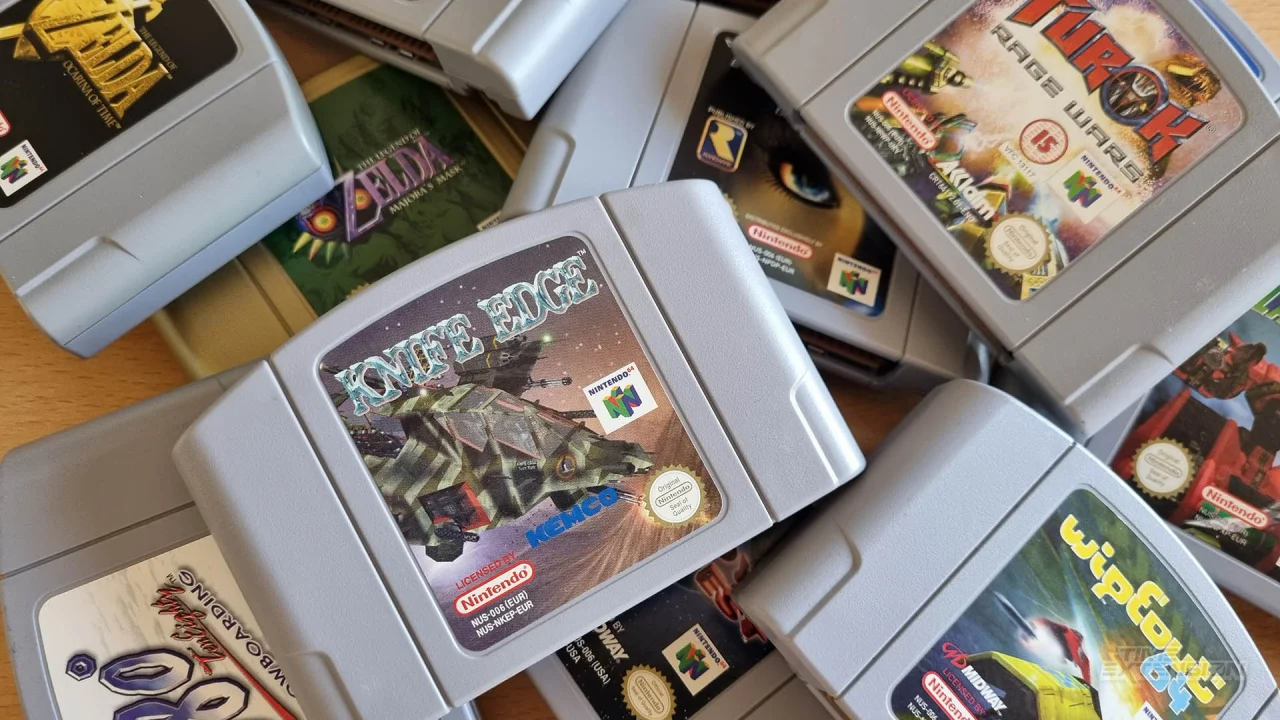The N64’s Hidden Games for short, holds a special place in the hearts of many gamers. With its groundbreaking 3D graphics and innovative controller design, it revolutionized the gaming industry. While iconic titles like Super Mario 64 and The Legend of Zelda: Ocarina of Time often steal the spotlight, there is a treasure trove of lesser-known multiplayer games that deserve recognition.
In this blog post, we will delve deep into the N64 library to unearth its hidden games – unforgettable multiplayer experiences that may have been overlooked by many. Get ready for a nostalgic trip down memory lane as we explore these multiplayer marvels that have stood the test of time.
N64’s Hidden Games by Martin Watts
Rocket: Robot on Wheels
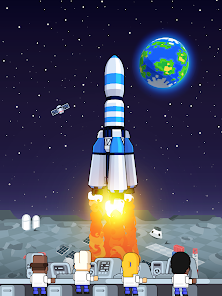
In the golden era of the N64’s Hidden Games, many titles aimed to leverage the console’s capabilities to produce 3D experiences. Among these, “Rocket: Robot on Wheels” emerged as a shining beacon of innovation. While its contemporaries primarily focused on platform jumping and enemy bashing, this game dared to delve deep into the realm of physics-based puzzles and challenges, a frontier few N64 games had explored.
The game’s setting, a vibrant theme park, was meticulously designed, offering players an immersive playground filled with whimsical attractions. From roller coasters to amusement rides, each section of the park presented distinct challenges, all intricately woven with the game’s physics mechanics.
This wasn’t just about reaching the next platform; it was about understanding the weight distribution with the tractor beam, using momentum to one’s advantage, and harnessing the properties of various objects to create pathways or solve intricate puzzles. The result was a series of challenges that felt grounded in reality, despite the game’s cartoonish facade.
What truly set “Rocket: Robot on Wheels” apart, however, was its commitment to realism within its physics engine. Actions and reactions weren’t predetermined animations but results of actual physical interactions within the game’s environment.
If a player attempted to balance a plank on a spherical object to create a makeshift seesaw, the success of that endeavor would depend on the plank’s position, the sphere’s size, and other tangible factors. This attention to detail transformed the gameplay experience from mere platforming to a series of cerebral challenges, pushing players to think critically and experiment fearlessly.
In doing so, “Rocket: Robot on Wheels” not only carved a unique niche for itself in the N64 library but also elevated the expectations for what 3D platformers could achieve.
Space Station Silicon Valley
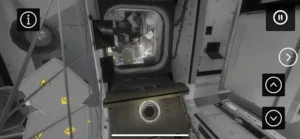
Video games have often been lauded for their power to transport players into fantastical worlds, worlds that defy the very essence of reality. It’s a platform where the imaginative essence of the human mind converges with technology, crafting experiences that are both surreal and captivating. “Space Station Silicon Valley” stands as a testament to this creative marriage.
At first glance, the concept of maneuvering through a digital realm as a mere microchip might appear as just another routine adventure. However, this game takes this seemingly simple premise and escalates it into an adventure teeming with possibility.
As this intrepid microchip, players aren’t confined to their initial form. The real allure lies in the ability to assimilate into a plethora of technologically augmented animals, each bestowing its own set of distinctive capabilities. These aren’t just your everyday creatures; they’re a fusion of organic wonder and mechanical prowess.
Imagine the sensation of soaring through the vast corridors of a sprawling space station as a bird, feeling the simulated wind rushing past, only to then transition into the heavy, powerful steps of a mechanical elephant, using its immense strength to manipulate the environment.
Each transformation isn’t just a change of pace – it’s a whole new perspective, a novel way to approach challenges and puzzles that litter the game’s intricate levels. The narrative, though whimsical in its presentation, adds layers of intrigue.
A space station designed as a haven for these bio-mechanical creatures, now descending into chaos, serves as a playground for exploration and discovery. As players journey through this ever-evolving maze, they’re constantly greeted with unexpected twists and turns, ensuring that the experience remains fresh and unpredictable.
In essence, “Space Station Silicon Valley” transcends traditional gaming boundaries, offering players an odyssey that is both refreshingly unique and deeply immersive.
Goemon’s Great Adventure: A Timeless Fusion of Tradition and Whimsy

The vast tapestry of Feudal Japan has long been a canvas for storytellers, often painted with tales of noble samurais, fierce battles, and ancient customs. It’s a period of history rich with honor, tradition, and unmistakable cultural significance.
Yet, in the gaming world, “Goemon’s Great Adventure” chose to revisit this epoch from an entirely different and unexpected perspective. Instead of treading the familiar path of samurai duels and historical reenactments, the game embraced a delightful blend of the classic and the contemporary, forging a journey that was both familiar and refreshingly offbeat.
At its heart, “Goemon’s Great Adventure” is a side-scrolling platformer. Yet, to categorize it merely as such would be a disservice to its creativity. As players delved deeper into the game, they were greeted with environments that felt paradoxically anachronistic.
There were traditional Japanese landscapes, beautifully rendered with pagodas, cherry blossoms, and serene villages. But these were juxtaposed against elements that seemed to come straight out of a sci-fi movie. Towering robots, contraptions of advanced technology, and quirky characters brought a level of unpredictability to the narrative.
This blend of traditional Japanese folklore with futuristic elements transformed what could have been a standard platforming game into narrative rich with humor, charm, and countless surprises.
One of the standout elements of “Goemon’s Great Adventure” was its ability to constantly shift the player’s expectations. Just when you thought you were about to engage in a serene exploration of an old Japanese town, a giant robot might come crashing down, demanding a frenzied battle.
These moments of unpredictability, combined with a vibrant art style and catchy musical scores, made the game a visual and auditory treat. Each level became not just a challenge but a journey through a Japan that was both recognizable and fantastical.
Goemon’s journey, filled with delightful characters, unexpected challenges, and a heartwarming sense of humor, proved that sometimes the most endearing adventures are those that playfully toy with history and imagination.
Tom Clancy’s Rainbow Six
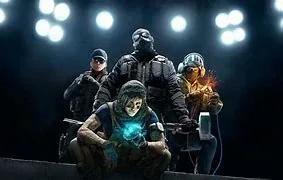
In the late 90s, the first-person shooter genre was seeing an explosion in popularity, especially with the advent of 3D gaming on consoles. The N64, in particular, was home to a slew of iconic titles, chief among them “GoldenEye 007”.
This James Bond inspired game set the bar for what a console FPS could achieve, making it a tough act for other titles to follow. However, unbeknownst to many, a challenger was emerging, one that didn’t simply rely on the reflex-driven gunfights that were synonymous with the genre.
“Tom Clancy’s Rainbow Six”, inspired by the eponymous novel, took a markedly different approach to the first-person shooter formula. While many FPS games of the era pushed players into high-octane gunfights, “Rainbow Six” demanded patience, forethought, and meticulous planning.
This was not a run-and-gun affair; this was tactical warfare. Players found themselves at the helm of an elite international counter-terrorist unit, and their success depended not just on sharp shooting skills, but on the ability to strategize.
Before each mission, players were given an intricate briefing, laying out the objectives, the layout of the environment, and known enemy positions. Armed with this information, they had to chart out a plan of action, designating waypoints for their squad, deciding on entry points, and even choosing which operatives would be best suited for the task at hand.
It was a game of chess, where every move counted. Once the planning phase was over, players would dive into the mission, watching their strategy unfold in real-time. The game’s emphasis on realism meant that one wrong move, one oversight in the plan, could lead to disaster.
Firefights were swift and deadly, with a single bullet being enough to take down a player or their teammates. This high-risk environment made every victory feel earned, every successful mission a testament to the player’s tactical prowess.
In a sea of fast-paced shooters, “Tom Clancy’s Rainbow Six” stood as a beacon for players who craved depth and strategy. It redefined what the FPS genre could be, showing that there was room for intellectual gameplay amidst the chaos of combat. In doing so, it set the stage for a series that would be celebrated for its tactical depth and realism for years to come.
Doom 64
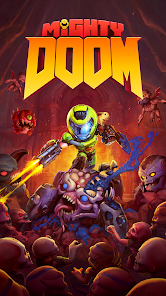
The “Doom” series, with its pulse-pounding action and demon-hunting escapades, has become a cornerstone in the annals of gaming history. From its inception on PCs in the early ’90s, the franchise has evolved, adapted, and continued to grip gamers around the world.
However, among its expansive lineage, one particular entry seems to drift into the background, often overshadowed by its more celebrated siblings. This game is “Doom 64”, an iteration designed exclusively for the Nintendo 64, which deserves far more attention than it has historically received.
“Doom 64” wasn’t merely a hasty adaptation or a recycled version of its predecessors. Instead, it stood as a bona fide sequel, boasting 32 meticulously crafted levels that showcased the capabilities of the N64.
Developers took the essence of what made “Doom” a hit – the breakneck pace, the visceral combat, and the ominous environments – and enhanced it for a new console and a new audience. Every level was a labyrinth of corridors, ambush points, and secrets, with each turn potentially hiding unspeakable horrors.
The game managed to retain the core mechanics that fan loved, while introducing fresh challenges and intricacies that made it distinct.
But what truly set “Doom 64” apart from its predecessors was its atmosphere. The N64’s hardware allowed for richer visuals and more immersive audio, and the developers capitalized on this. While the series was no stranger to dark and foreboding environments, “Doom 64” took it a step further.
Ambient soundscapes echoed with distant growls and the hum of machinery, creating an unsettling aura that kept players perpetually on edge. The lighting, too, played a pivotal role. Dim corridors illuminated only by the glow of computer terminals, or the flicker of distant flames added layers of tension, making every encounter with the denizens of hell even more harrowing.
The interplay of shadow and light was not just a graphical showcase but a tool that amplified the dread.
In conclusion, “Doom 64” represents a harmonious blend of the familiar and the innovative. It serves as a testament to how a series can evolve while staying true to its roots. For those who may have missed this underrated gem in the illustrious “Doom” saga, it’s never too late to dive into its haunting depths and experience a chapter that remains both iconic and refreshingly unique.
Mischief Makers
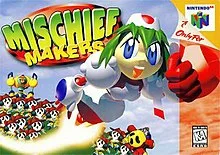
In the late ’90s, the gaming industry was abuzz with the rise of 3D platformers. The third dimension offered a new frontier of possibilities, with games pushing the boundaries of exploration and movement in virtual spaces. However, not all titles were eager to jump on this 3D bandwagon.
Among the few that dared to challenge the prevailing trend was “Mischief Makers,” a game that harkened back to the age of 2D sides rollers but brought with it a fresh perspective.
At the heart of “Mischief Makers” was its unconventional gameplay mechanic, focusing on the protagonist’s ability to interact with the environment in distinctive ways. Players could grab onto objects and foes alike, tossing them across the screen, or even shaking them vigorously.
This wasn’t just a gimmick. It became central to solving puzzles, navigating challenges, and even confronting bosses. The world of “Mischief Makers” wasn’t just a backdrop; it was an active playground. Every element, from the platforms to the enemies, could be manipulated, turned into tools or weapons, depending on the player’s ingenuity.
Visually, the game was a feast for the eyes. While many titles of the era aimed for realism, “Mischief Makers” embraced a more animated aesthetic. Its vibrant colors and whimsical designs infused every frame with life and energy.
Characters exuded personality, and the environments, though constrained by the 2D plane, had depth and detail. This colorful palette combined with the innovative gameplay made each level an adventure, a puzzle, and a joy to experience. “Mischief Makers” was a testament to the fact that innovation doesn’t always mean adopting the latest trends.
Sometimes, it means looking at familiar landscapes with new eyes, and finding magic in the tried and true.
Quake II
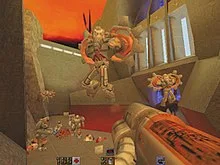
When it comes to iconic first-person shooters, the “Quake” series stands tall, with its relentless pace and gritty atmosphere. “Quake II,” a stalwart of the series, made its remarkable transition from the world of PCs to the Nintendo 64, a console known more for its family-friendly titles and platformers.
The transition was bold and raised eyebrows, primarily because the N64’s hardware was not specifically tailored to handle the intense requirements of such a graphically demanding game.
Given the limitations of the console, it was inevitable that some elements of “Quake II” would be pared down or reimagined to fit the N64 mold. Despite these constraints, the core essence of the game remained untouched. The eerie corridors, the menacing enemies, and the robust arsenal of weapons were all present, albeit with modifications to suit the platform.
These adjustments, instead of detracting from the game, provided a unique flavor to the N64 version, making it stand out from its PC sibling.
What truly shone through was the gameplay. The single-player campaign of “Quake II” on the N64 preserved the atmospheric tension and heart-pounding action that fans of the series had come to adore. Each level was a maze of corridors filled with hidden threats, requiring both quick reflexes and strategic thinking.
Meanwhile, the multiplayer mode, a defining feature of the original, was adapted seamlessly. Even on the N64’s limited hardware, players could dive into arenas, battling it out in frenetic deathmatches that captured the essence of the “Quake” experience. Through and through, “Quake II” on the N64 demonstrated the console’s versatility and reinforced its reputation as a platform that could cater to hardcore gamers as much as it did to casual ones.
BattleTanx: Global Assault

In the pantheon of N64 titles, vehicular combat games carved out a niche for themselves, providing high-octane thrills and destructive delights. However, “BattleTanx: Global Assault” was not just another run-of-the-mill entry in this category. It went a step beyond, marrying the sheer thrill of high-speed vehicular chaos with intricate tactical gameplay, making it one of the console’s underrated treasures.
Vehicular combat games predominantly champion the adrenaline rush of speed combined with the unbridled joy of causing destruction. These titles often revolve around the principle of ‘drive fast, hit hard.’ While “BattleTanx: Global Assault” certainly encapsulated this ethos, it set itself apart with its innovative gameplay mechanics.
Set in a grim post-apocalyptic future, the game’s ambiance was immediately distinguishable. Cities lay in ruins, a testament to the wars of the past, and now, they became the playground for tank battles. Players had access to a versatile arsenal of tanks, each with its strengths, weaknesses, and specialized weaponry.
This assortment ensured that every player could find a tank that resonated with their playstyle, be it an agile scout or a heavily armored juggernaut.
The game’s environments were not just static backdrops; they played a pivotal role in the gameplay. Buildings crumbled, roads shattered, and landmarks were decimated as tanks rolled through the urban wastelands. This level of environment destructibility added a layer of strategy not often seen in the genre.
Players had to account for the changing terrains, using the rubble for cover or creating chokepoints to ambush enemies. Charging headfirst into battle could be exhilarating, but the game’s tactical depth made players reconsider such brash tactics. Instead, understanding the lay of the land, predicting enemy movements, and coordinating with teammates became essential to victory.
Forsaken
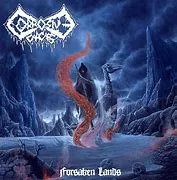
In a vast digital landscape where, numerous titles vied for attention, “Forsaken” emerged as a breath of fresh air, pushing boundaries in both design and mechanics. Its unique allure stemmed from its unparalleled freedom of movement, giving gamers an experience that was both liberating and disorienting.
Unlike traditional games where the player’s movement was limited to a two-dimensional plane or constrained within specific parameters, “Forsaken” broke the mold. With a revolutionary six degrees of freedom, players were granted the ability to move forward and backward, up and down, and also roll, pitch, and yaw in any given direction.
This intricate system transformed not just how players explored the game world, but also how they approached combat and strategy.
This newfound liberty in movement brought along with it an intricate layer of complexity. No longer could players predict an enemy’s approach from just two directions. Threats could now come from above, below, or even from an oblique angle.
Such unpredictability heightened the tension of every level, forcing players to be constantly aware of their surroundings, to listen intently for the slightest hint of danger, and to think on their feet. Every corridor turned, every open space entered, became a strategic decision.
The traditional front, back, left, and right distinctions became blurred, and players had to recalibrate their instincts and strategies, leading to intense and heart-pounding engagements.
Star Wars: Battle for Naboo
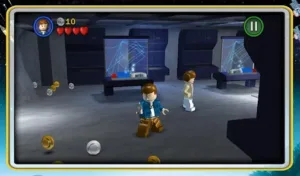
The Original Trilogy. Available for Android devices, this game promises players an extensive journey across all six iconic Star Wars episodes. Presented through the whimsical lens of LEGO’s distinct style and humor, players embark on an adventure that starts with Star Wars: Episode I – The Phantom Menace. And as the age-old saying goes, may the bricks be with you on this enthralling escapade!
TCS isn’t just another Star Wars game; it’s a universe of its own. It offers 36 riveting story mode levels, paired with an array of bonus content. Players can relive iconic moments – from the tense Trade Federation’s “negotiations” with Jedi stalwarts Obi-Wan Kenobi and Qui-Gon Jinn in The Phantom Menace to the adrenaline-pumping space battle over Endor in Return of the Jedi.
And for those seeking additional adventures, bonus content boasts Bounty Hunter missions, a special Challenge Mode, captivating Arcade Levels, and more! In terms of characters, players are spoilt for choice.
With over 120 unlockable characters, you can step into the shoes of iconic figures like Luke Skywalker, Darth Vader, and Han Solo or embrace the dark side with characters like Boba Fett. Each character, whether from the light or dark side, possesses unique Force abilities.
Players can decide between unleashing a Force Throw to subdue a Jedi or harnessing their Lightsaber skills paired with a Force Push to challenge the nefarious Empire. The game maintains its LEGO charm with its signature gameplay style – from smashing objects into LEGO bricks to seamlessly switching characters during different story level.
FAQs
Why Are N64 Multiplayer Games so Revered Among Gaming Communities?
The N64 introduced groundbreaking 3D graphics, revolutionizing multiplayer gameplay. Its diverse library offers both iconic titles and lesser-known gems, providing immersive experiences that fostered camaraderie and competition, making it a staple in many nostalgic gaming memories.
How Did N64 Games Manage to Stand out Despite Technological Limitations?
Despite its limitations, N64 developers showcased remarkable innovation, pushing the console to its limits. The result was games rich in content, gameplay depth, and creativity, often utilizing unique game mechanics that became benchmarks for future game designs.
Are N64 Multiplayer Games Suitable for Modern-Day Gamers?
Absolutely! While graphics and interfaces have evolved, the core gameplay, stories, and mechanics of N64 multiplayer games remain timeless. They offer a blend of nostalgia for older gamers and a fresh, unique experience for the newer generation.
How Do Lesser-Known N64 Multiplayer Games Compare to The Iconic Titles?
While iconic titles have their deserved fame, many lesser-known games offer equally compelling, if not more unique, experiences. They often feature innovative gameplay mechanics, stories, or designs that were ahead of their time or catered to a niche audience.
Why Is There a Resurgence in The Interest for N64 Multiplayer Games?
The cycle of nostalgia, combined with the recognition of the N64’s groundbreaking influence in the gaming industry, has led many to revisit these classics. Moreover, the simplicity and pure fun of these games make them evergreen, appealing to all ages.
Can I Play N64 Multiplayer Games on Modern Systems or Platforms?
While the original N64 games were designed for the specific console, many emulators and modern re-releases allow these games to be played on contemporary platforms. Always ensure you’re adhering to local copyright laws when using emulators.
What Makes N64 Multiplayer Games a Worthwhile Experience Today?
Beyond nostalgia, N64 multiplayer games offer straightforward, engaging gameplay without the often-overwhelming complexities of modern games. Their unique mechanics, stories, and innovative design provide a distinct gaming experience that still resonates today.

